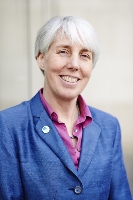The broad-spectrum herbicide glyphosate (most commonly known by the trade name “Roundup”) has been available to farmers since the mid-1970s, and is now one of the most widely used herbicides in the world. Since the 1970's the use of glyphosate-based herbicides (GBHs) has increased 100-fold, and continued growth in application is expected due, in part, to the emergence of glyphosate-resistant weeds which require farmers to increase the volume of their applications.
When glyphosate was first introduced, industry toxicity testing demonstrated relatively low risks to human health. However, a recently published consensus statement observes:
To accommodate changes in GBH use patterns associated with genetically engineered, herbicide-tolerant crops, regulators have dramatically increased tolerance levels in maize, oilseed (soybeans and canola), and alfalfa crops and related livestock feeds. Animal and epidemiology studies published in the last decade, however, point to the need for a fresh look at glyphosate toxicity. Furthermore, the World Health Organization’s International Agency for Research on Cancer recently concluded that glyphosate is “probably carcinogenic to humans. (Concerns over us of glyphosate-based herbicides associated with exposures: a consensus statement, February 17, 2016, Environmental Health)
GBHs can enter the body through food and drinking water. Agricultural workers and communities are at increased risks from exposures. Particular human health concerns include endocrine-system damage, cancer, and congenital malformations.
On this call international speakers discussed the state of the current research on glyphosate and human health impacts, considerations for revised risk assessment protocols and policy implications in the EU and other countries.
Dr. Fiorella Belpoggi of the Ramazzini Institute in Italy discussed both the paper and her current research to assess the most appropriate dosage method by which to screen for glyphosate in the biological fluids (blood, urine, mother’s milk) and assess the risks connected with glyphosate at doses comparable with those currently permitted in man in the USA and Europe (doses which are nowadays considered risk-free). Dr. Christopher Portier, former director of the National Center for Environmental Health at the CDC and current Senior Collaborating Scientist with the Environmental Defense Fund, reviewed IARC's evaluation of glyhosate, which classified the herbicide as a possible carcinogen. Dr. Lisette van Vliet, Senior Policy Advisor at the Health and Environment Alliance in Brussels, then discussed the policy implications for emerging glyphosate research in the EU.
Featured speakers
Dr. Christopher Portier, Senior Collaborating Scientist with the Environmental Defense Fund, and Adjunct Professor at Emory University, Maastricth University, and the University of Queensland. Dr Portier is an expert in the design, analysis, and interpretation of environmental health data with a focus on carcinogenicity. Dr. Portier has contributed to the development of cancer risk assessment guidelines for national and international governments and agencies and has directed or contributed significantly to numerous scientific reviews, risk assessments, most notably those for dioxins, aflatoxins, electromagnetic fields, diesel particle emissions, herbicides, and climate change. He currently serves on one US National Academy of Sciences committee, has served on US EPA's Science Advisory Board and US EPA's Science Advisory Panel, and has been a member of numerous WHO/IARC scientific committees. Until 2013, Dr. Portier, was the Director of the National Center for Environmental Health at the CDC, as well as Director of the Agency for Toxic Substances and Disease Registry.
Dr. Fiorella Belpoggi, Director of the Research Area of the Ramazzini Institute, Bologna. Dr Belpoggi is an expert in the study of agents that can cause tumours and other degenerative pathology, such as asbestos, fuels and gasoline additives, pesticides, ionizing radiation and lowfrequency and radio-frequency electromagnetic fields, as well as heavy metals. She has focused particularly on foodstuffs and the risks of exposure even to small doses of chemical substances or physical agents during embryo - foetal life and childhood. She has also assessed the efficacy of drugs and pharmaceutical or herbal active principles in checking the onset and development of neoplasias. She is a Member of the International Academy of Toxicological Pathology (IATP), the New York Academy of Sciences and the Collegium Ramazzini Executive Board, an International Academy including over 180 members, each an independent expert in environmental and occupational diseases, representing 36 countries throughout the world.
 Dr. Lisette van Vliet, HEAL’s Senior Policy Adviser, Chemicals and Chronic Disease Prevention. Dr. van Vliet covers REACH, and other EU chemicals legislation, focusing on endocrine disruptors, phthalates such as DEHP, and mercury. Dr. Van Vliet joined the Health and Environment Alliance in 2005, initially working jointly with the International Chemical Secretariat (ChemSec) and Health Care Without Harm Europe. Prior to working on toxics, she was active in international forest politics, mainly on forestry and timber certification and wood purchasing policy. She conducted research for environmental NGOs such as Greenpeace and Co-op America, Save the Rainforest and Robin Wood (Germany), and for environmental management consultants. She holds a PhD in International Relations and Environmental Studies from the Australian National University in Canberra.
Dr. Lisette van Vliet, HEAL’s Senior Policy Adviser, Chemicals and Chronic Disease Prevention. Dr. van Vliet covers REACH, and other EU chemicals legislation, focusing on endocrine disruptors, phthalates such as DEHP, and mercury. Dr. Van Vliet joined the Health and Environment Alliance in 2005, initially working jointly with the International Chemical Secretariat (ChemSec) and Health Care Without Harm Europe. Prior to working on toxics, she was active in international forest politics, mainly on forestry and timber certification and wood purchasing policy. She conducted research for environmental NGOs such as Greenpeace and Co-op America, Save the Rainforest and Robin Wood (Germany), and for environmental management consultants. She holds a PhD in International Relations and Environmental Studies from the Australian National University in Canberra.
The call was moderated by Elise Miller, MEd, CHE's director. The call lasted for one hour and was recorded.
